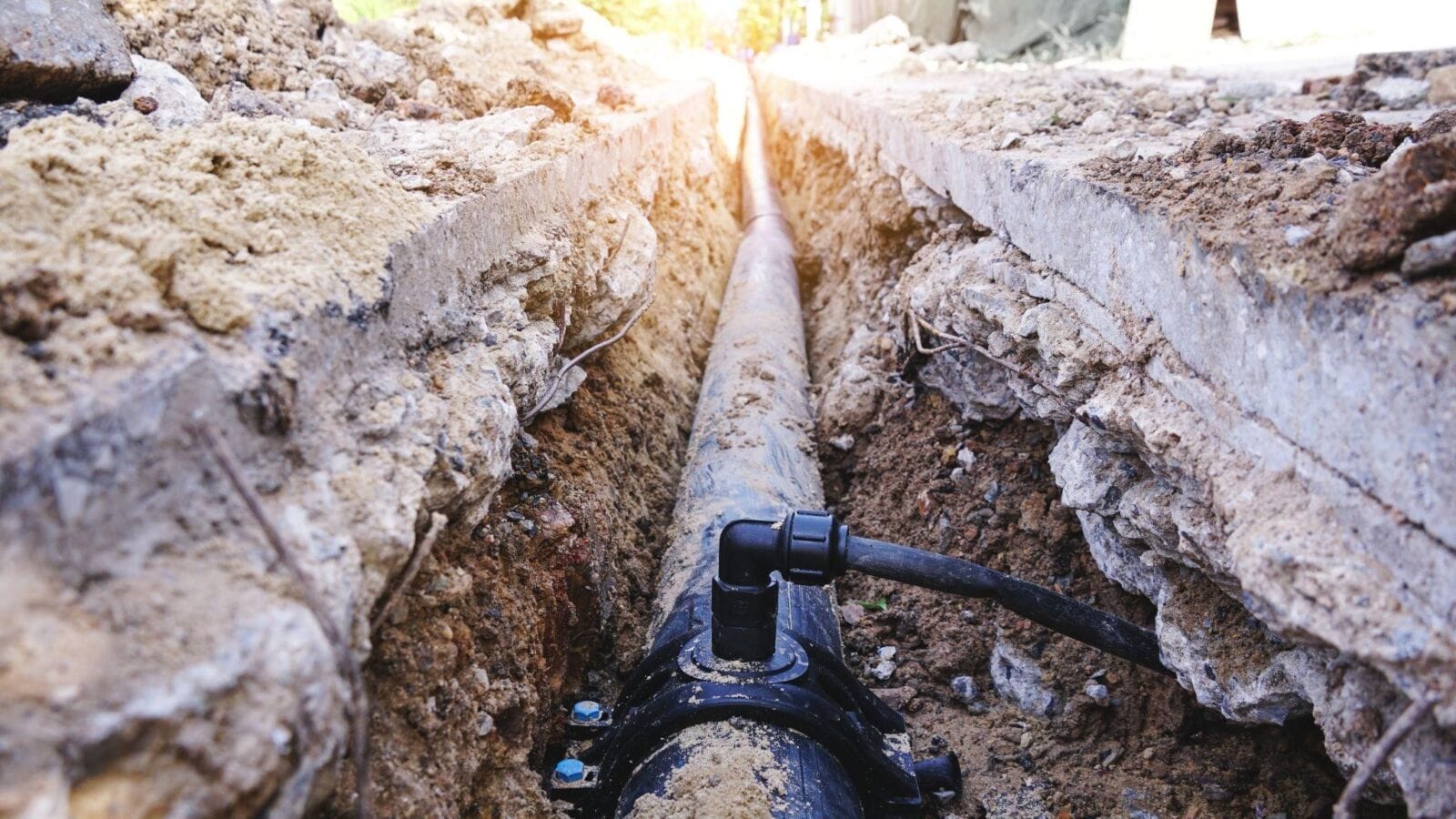Installing a new sewer line is a crucial undertaking that can significantly impact a property’s overall value and function. Whether you’re upgrading an existing line, connecting to a city sewer system, or replacing an outdated septic system, understanding the factors that affect sewer installation cost and timeline will help you plan your project effectively.
LEARN MORE: Read the latest consumer and lifestyle news here
At Aces Four, we specialize in sewer installation, repair, and maintenance, providing quality service tailored to each project’s needs. In this guide, we’ll break down the critical factors that influence the cost and timeline of sewer installation and share insights to help you make informed decisions for your home or business.
Why Sewer Installation Matters
A well-installed sewer line is essential for proper waste removal, sanitation, and environmental protection. Faulty sewer lines can lead to backups, unpleasant odors, and potential contamination issues, making professional sewer installation a vital investment. Working with an experienced sewer repair and installation company like Aces Four ensures your sewer system is built to last, meeting both safety standards and local code requirements.
Key Factors That Affect Sewer Installation Costs
The cost of sewer installation can vary widely depending on several factors. Here are some key considerations to keep in mind when budgeting for a sewer installation project:
1. Location and Distance to Connection Point
The distance between your property and the nearest sewer connection point has a significant impact on cost. Installing a sewer line for a home close to a municipal sewer connection will be much less expensive than installing one far from the main sewer line.
Factors to Consider:
- Urban vs. rural location: Urban properties are often closer to city sewer lines, while rural homes may require long-distance connections or even special permits.
- Terrain and obstacles: Hills, trees, roads, and sidewalks can all increase installation difficulty, impacting the time and cost.
2. Excavation and Trenching Needs
Excavation is usually one of the most labor-intensive aspects of sewer installation. The depth, soil composition, and type of terrain can all affect the excavation process.
Factors to Consider:
- Soil composition: Rocky or clay-rich soils may require specialized machinery, adding to costs.
- Depth of installation: Deep trenching may be required to reach the connection point, especially if the ground is hard or if the sewer needs to be below the frost line in colder climates.
3. Permits and Regulations
Local governments often require permits and inspections for sewer installations. These permits ensure that the installation meets city codes and regulations, protecting the public and the environment.
Factors to Consider:
- Permit costs: Permit fees vary by location, so checking with your local authority will give you an accurate estimate of these costs.
- Inspection requirements: Some municipalities require multiple inspections, which can impact the project’s timeline and cost.
4. Type of Sewer Pipe Material
Sewer pipes come in various materials, each with its own cost, durability, and lifespan. The choice of material can significantly impact both upfront costs and long-term maintenance needs.
Common Materials:
- PVC: A cost-effective, lightweight option that’s easy to install and resistant to corrosion.
- Cast Iron: Durable and long-lasting, though heavier and more expensive to install.
- Clay: Sometimes used in specific applications; more fragile but eco-friendly.
- HDPE: High-density polyethylene is durable and flexible, often used for trenchless sewer lines.
Choosing the right material is essential for balancing cost, durability, and ease of maintenance.
5. Trenchless vs. Traditional Installation Methods
Advancements in trenchless technology have made it possible to install sewer lines with minimal disruption to the landscape. While trenchless methods tend to cost more upfront, they often save time and reduce the need for restoration after installation.
Comparison:
- Traditional installation: Requires extensive excavation, which can increase landscaping repair costs.
- Trenchless methods: Techniques like pipe bursting or horizontal directional drilling allow for sewer installation with minimal excavation, which is ideal for properties with mature landscaping or existing structures nearby.
6. Labor Costs and Professional Expertise
The complexity of the installation will influence labor costs. Hiring experienced professionals can make a significant difference in project quality and timeline, ensuring that your system is installed correctly to avoid future issues.
Factors to Consider:
- Level of expertise: Experienced sewer installation professionals may charge more but often complete the job faster and with higher quality standards.
- Labor intensity: Projects involving deep digging, rocky soil, or challenging terrain may require more labor and, therefore, increase costs.
Timeline for Sewer Installation: What to Expect
While every project is unique, several common factors affect the timeline of sewer installation. Here’s a breakdown of what you can expect regarding scheduling:
1. Project Planning and Permitting
Before installation begins, planning and permits are essential steps that can take anywhere from a few days to several weeks. Obtaining permits, scheduling inspections, and coordinating with local utilities for marking underground lines are necessary steps.
Average Timeframe:
- Permit approvals: 1-4 weeks, depending on local government timelines.
- Utility marking: 1-2 days, depending on your region and scheduling availability.
2. Excavation and Site Preparation
The excavation process generally takes a few days but may extend if the site is challenging or if unexpected issues, such as underground obstructions, arise.
Average Timeframe:
- Typical excavation: 1-3 days, depending on soil conditions and depth.
- Difficult terrain: Additional 1-3 days if rocky soil or extensive tree roots are present.
3. Pipe Installation
Installing the pipe is a straightforward process that typically takes a day or two, depending on the length and complexity of the installation. Trenchless installations can speed up this process, while traditional digging methods might take longer.
Average Timeframe:
- Trenchless installation: 1-2 days
- Traditional installation: 2-4 days, accounting for more extensive digging.
4. Inspection and Backfilling
Once the pipe is installed, an inspection may be required before backfilling the trench. If everything meets code, backfilling and site cleanup can proceed.
Average Timeframe:
- Inspection: 1 day (depends on local authority scheduling)
- Backfilling and cleanup: 1-2 days
5. Final Site Restoration
If landscaping or paving has been disturbed, restoring these areas may take additional time. Trenchless methods require minimal restoration, while traditional installations may need more extensive landscaping work.
Average Timeframe:
- Trenchless restoration: Minimal to no additional time
- Traditional restoration: 1-3 days, depending on the extent of repair work needed.
Why Choose Aces Four for Your Sewer Installation?
At Aces Four Sewer Repair, we understand that sewer installation is a significant investment, and our goal is to provide a seamless, efficient experience. With our expertise in both traditional and trenchless methods, we offer solutions tailored to your property’s specific needs. Our team is committed to transparent pricing, clear communication, and high-quality workmanship that ensures the longevity and reliability of your sewer line.
Our Services Include:
- Sewer line inspections: Assessing your current sewer situation to provide an accurate project estimate.
- Traditional and trenchless installation: Choosing the method that best fits your property and budget.
- Permitting and compliance: Ensuring all work meets local codes and regulations for hassle-free approval.
- Maintenance recommendations: Tips and advice to keep your sewer line functioning well after installation.
Ready to Install a New Sewer Line? Contact Aces Four Today!
Sewer installation doesn’t have to be overwhelming. With the right planning and professional support, you can have a new, high-quality sewer line that meets your needs and lasts for years. Contact Aces Four Sewer Repair today to learn more about our services and get an estimate for your sewer installation project. Our experienced team is here to answer all your questions and provide the reliable sewer solutions your home or business deserves.
Protect your property’s plumbing with Aces Four’s trusted sewer installation services. Reach out to us today!




